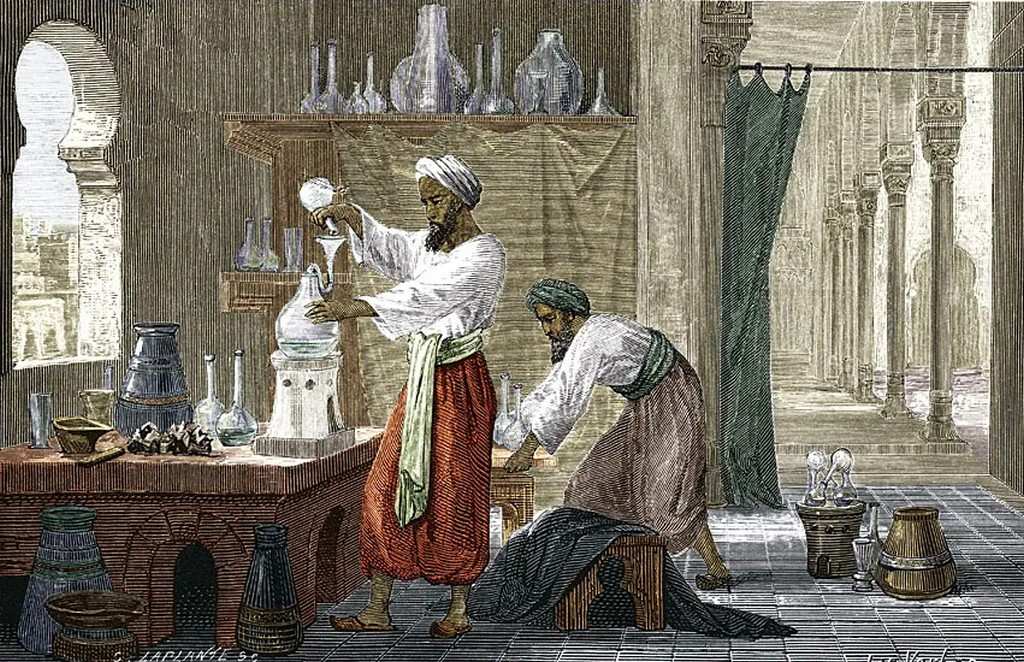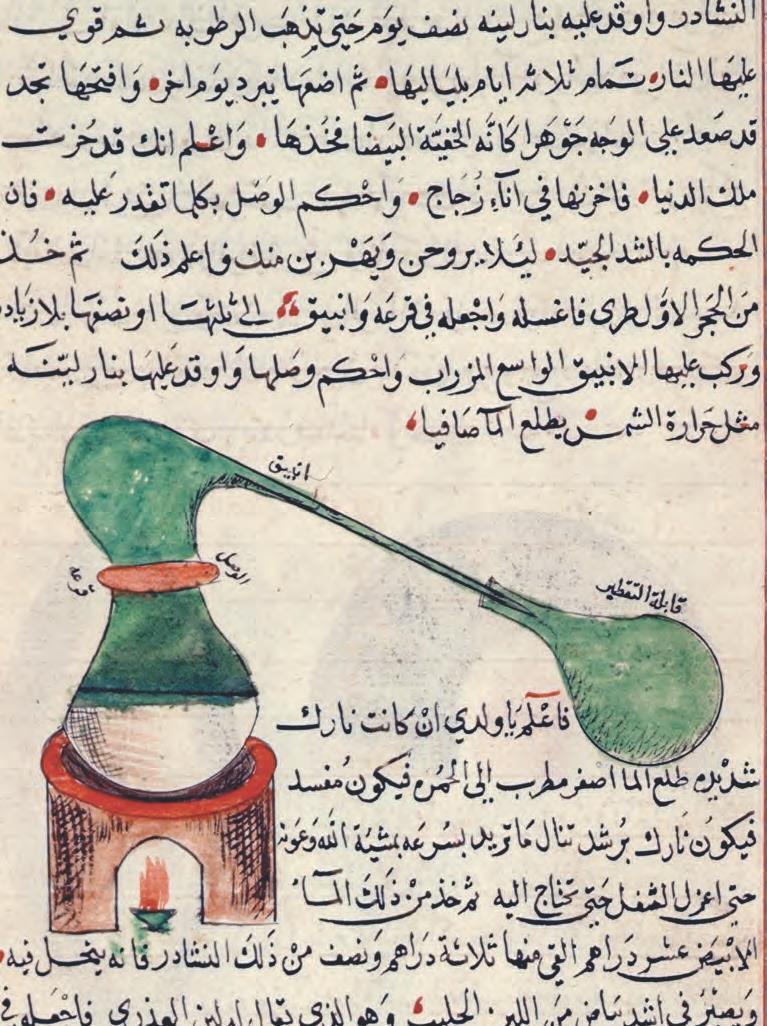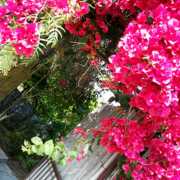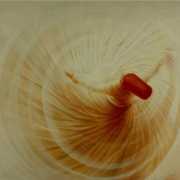“The Chemistry of Perfume and Distillations” by Al-Kindi
A Guide to the Art of Perfumery
The Life and Legacy of Al-Kindi: A Polymath’s Journey
In the vibrant intellectual landscape of the Golden Age of Islam, Al-Kindi emerged as a beacon of knowledge, a polymath whose contributions to various fields of science and philosophy left an enduring legacy. Born in Kufa, Iraq, around 800 AD, Al-Kindi’s insatiable curiosity and brilliance propelled him to the forefront of the intellectual circle at the House of Wisdom (Dar al Hikma) in Baghdad, the first university in the world.
A Life of Unfettered Learning
Embracing a holistic approach to knowledge, Al-Kindi delved into a vast array of subjects, including logic, mathematics, astronomy, optics, music, and natural sciences. He possessed a remarkable ability to synthesize and apply knowledge across disciplines, earning him the title “The Philosopher of the Arabs” and “The First of the Wise.”
A Pioneering Mind in Chemistry
Al-Kindi’s contributions to chemistry were groundbreaking, particularly in the field of distillation. He recognized the significance of distillation in extracting pure and concentrated essences from plant materials, laying the foundation for modern perfumery. His treatise, “The Chemistry of Perfume and Distillations,” revolutionized the art of perfume creation, providing detailed instructions, classification systems, and blending techniques that continue to influence perfumery today.
A Philosopher’s Insight into Metaphysics
Al-Kindi’s philosophical pursuits extended to metaphysics, where he sought to reconcile faith and reason. He believed that philosophy could serve as a tool to understand God and the universe, fostering a harmonious relationship between religious beliefs and intellectual inquiry. His works on metaphysics influenced Islamic thought and contributed to the development of philosophical discourse in the Islamic world.
A Vision for the Scientific Method
Al-Kindi championed the importance of observation, experimentation, and rational thought, laying the groundwork for the scientific method. He emphasized the need to collect and analyze data, formulate hypotheses, and test them through empirical observations. His scientific approach to inquiry had a profound impact on later generations of scientists, including those of the European Renaissance.
A Legacy of Enduring Influence
Al-Kindi’s contributions to various disciplines had a profound and lasting impact on the intellectual landscape of medieval Islam and beyond. His works were translated into numerous languages, disseminating his knowledge to a wider audience and inspiring generations of scholars and scientists. His legacy continues to inspire modern scientists and philosophers, reminding us of the power of intellectual curiosity and the pursuit of knowledge.
Al-Kindi’s life serves as a testament to the human capacity for intellectual exploration and the transformative power of knowledge. His contributions to various fields of science and philosophy enriched the intellectual heritage of the Islamic world and continue to shape our understanding of the world around us. His unwavering pursuit of knowledge and his ability to synthesize it across disciplines remind us of the importance of a holistic approach to learning and the enduring value of intellectual curiosity. Al-Kindi’s legacy stands as a beacon of learning, inspiring us to continue the pursuit of knowledge and understanding in all its diverse forms.
“The Chemistry of Perfume and Distillations” by Al-Kindi: A Comprehensive Guide to the Art of Perfumery
In the heart of the Golden Age of Islam, a polymath named Al-Kindi embarked on a journey of scientific exploration, delving into the intricacies of chemistry, botany, and distillation. His magnum opus, “The Chemistry of Perfume and Distillations,” stands as a testament to his profound knowledge and innovative spirit, revolutionizing the art of perfumery.
Distillation: The Cornerstone of Perfume Creation
Al-Kindi recognized distillation as the cornerstone of perfumery, a process that separates aromatic compounds from plant materials, yielding concentrated and pure essences. He meticulously described the various distillation apparatuses, outlining the optimal conditions for extracting the essences without compromising their integrity. His detailed instructions covered the selection of appropriate materials, the construction of distillation vessels, and the precise control of heat and vaporization.
Classifying Fragrant Substances: A Foundation for Scent Creation
Al-Kindi understood that the effectiveness of perfumes lies not only in the extraction process but also in the selection and combination of fragrant substances. He categorized fragrant ingredients based on their properties and applications, distinguishing between floral, herbal, animalic, and resinous accords. This classification system provided a framework for understanding the diverse range of scents and their compatibility in perfumery.
A Culinary Symphony of Scents: Recipes for Perfume Creation
Al-Kindi’s passion for perfumery shines through in his recipes, meticulously outlining the composition of various perfumes, including fragrant oils, salves, and aromatic waters. He provided precise instructions for gathering and preparing each ingredient, ensuring the highest quality and consistency. These recipes reflected his deep understanding of the chemical interactions and aromatic properties of different substances, showcasing his ability to harness their unique qualities to create captivating scents.
Harmonizing Aromatic Accords: The Artistic Essence of Perfume Blending
Al-Kindi’s artistic approach to perfumery extended beyond the preparation of individual scents. He delved into the intricacies of fragrance blending, emphasizing the importance of harmonizing different aromas to create complex and fascinating accords. He discussed the principles of balancing intensities, adjusting proportions, and exploiting the synergistic effects of various ingredients to achieve desired olfactory experiences. This section of the treatise demonstrated his mastery of perfume blending, showcasing his ability to orchestrate a delicious symphony of scents.
Medicinal Aromatics: The Fusion of Perfumery and Healthcare
Al-Kindi’s holistic approach to medicine extended to the realm of perfumery. Recognizing the potential therapeutic benefits of fragrant compounds, he provided recipes for salves and ointments infused with fragrant substances. He suggested their use for various skin conditions and ailments, believing that their therapeutic properties could enhance the overall well-being of individuals. This aspect of the treatise reflected Al-Kindi’s deep understanding of the interconnectedness of mind, body, and spirit.
Quality Control: The Unwavering Quest for Excellence
Throughout the treatise, Al-Kindi emphasized the paramount importance of quality control and consistency in perfumery. He provided detailed instructions for ensuring the purity of aromatic substances, ensuring their longevity and efficacy. He advocated for meticulous storage practices and recommended methods for identifying and discarding deteriorated ingredients. This emphasis on quality reflected Al-Kindi’s dedication to excellence and his unwavering pursuit of the highest standards in perfumery.
A Legacy of Innovation and Enduring Influence
“The Chemistry of Perfume and Distillations” stands as a testament to Al-Kindi’s pioneering contributions to the art of perfumery. His groundbreaking insights into distillation techniques, his vast knowledge of aromatic substances, and his creative approach to perfume blending have left an indelible mark on the history of perfumery. His treatise continues to inspire and guide perfumers today, serving as a timeless source of knowledge and inspiration.
References
Islamic Sensory History – Christian Lange and Adam Bursi – The book presents a selection of texts translated into English from Arabic and Persian. These selected texts all offer illustrative engagements with issues related to the sensorium in different times, places, and social milieus throughout the early and medieval history of Islamic societies. Each chapter is prefaced by an introductory essay by the translator, with specific attention to the role of the senses in the translated text’s language, genre, and social context. https://brill.com/display/title/62333?rskey=Av1ojq&result=1
The book is under CC BY-NC 4.0 license, so you can freely download the Pdf























Leave a Reply
Want to join the discussion?Feel free to contribute!